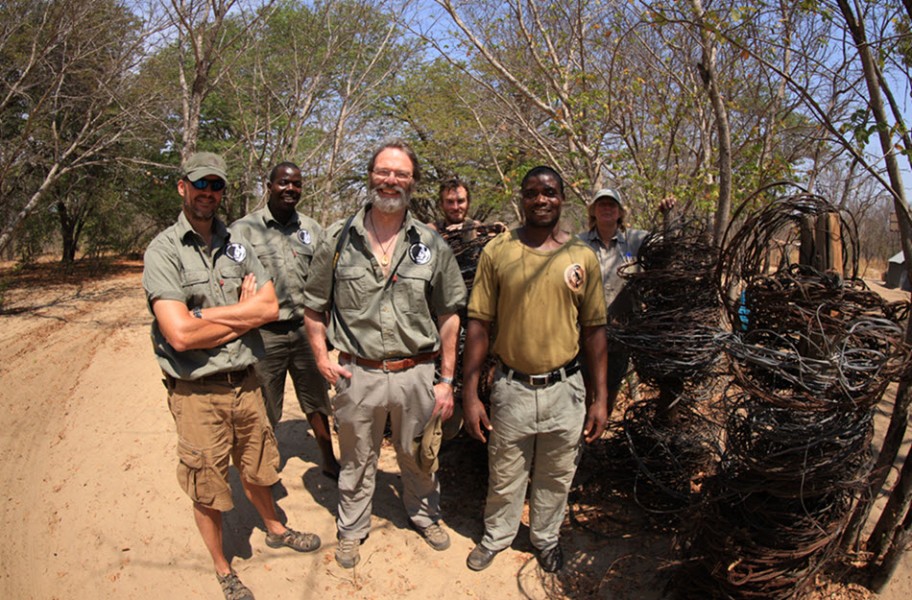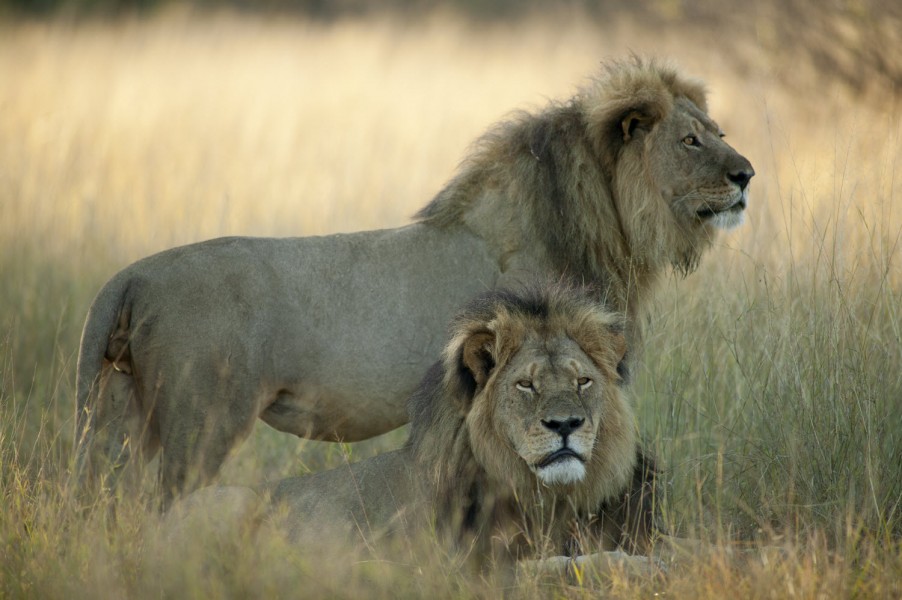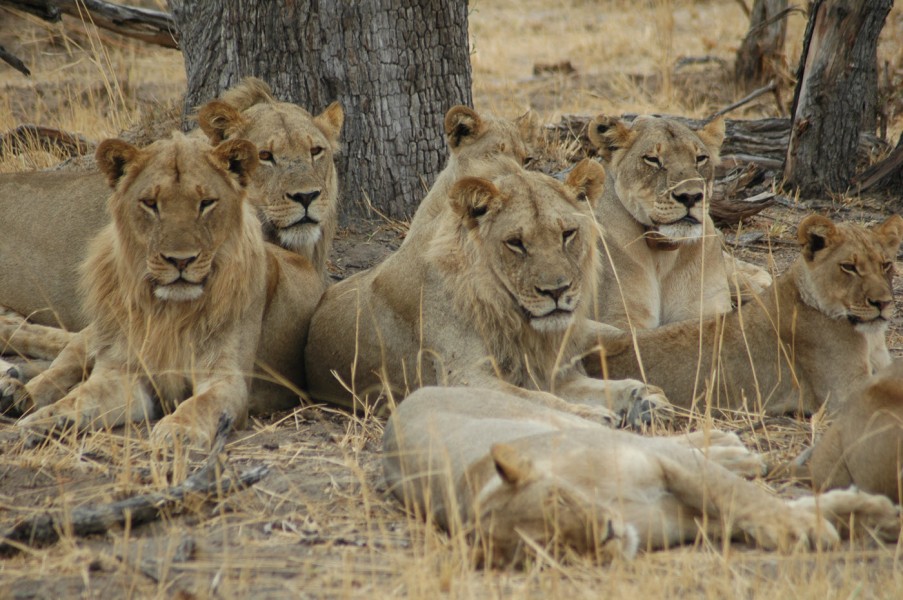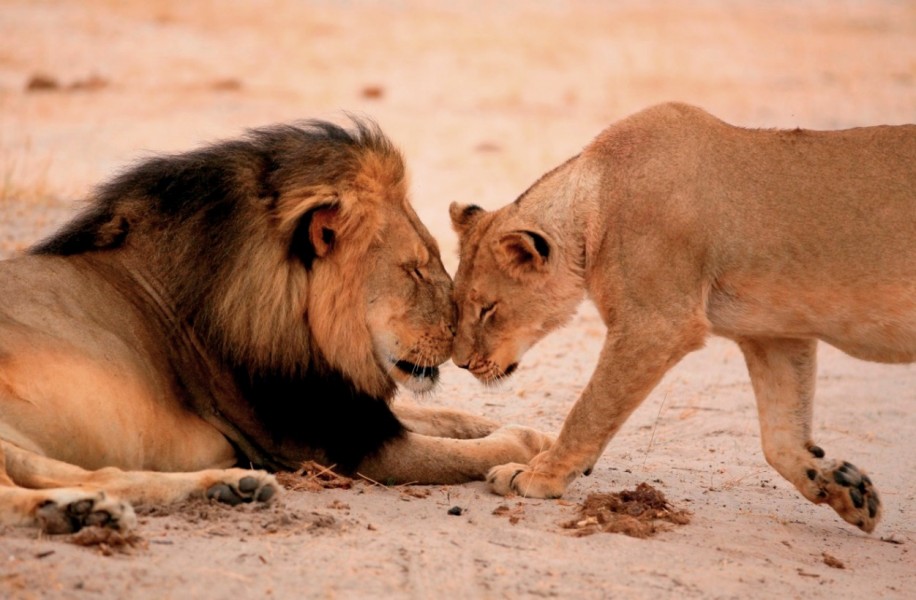- Wildtech continues its interview with Professor David Macdonald, director of WildCRU at Oxford University and of the long-term study of Cecil the Lion and his cohorts through the Hwange Lion Project.
- The results of WildCRU research persuaded the Zimbabwean authorities to reduce the annual lion hunt quota from 60 each year to between four and six lions – an order-of-magnitude reduction.
- The worldwide outrage and sorrow around Cecil’s death could represent “a fork in the road as to how global society wants to live alongside nature,” Macdonald says.
This second half of our interview with Professor David Macdonald, the director of the Wildlife Conservation Research Unit (WildCRU) at Oxford University who, together with Dr Andrew Loveridge and their team had been studying Cecil the Lion before the animal was killed. The first half focused on the technologies Macdonald and his team have used to study lions and technology’s role in wildlife conservation biology. Here he offers some history of conservation science, WildCRU, and the Hwange-Okavango Lion Project and his hopes for the future of wildlife conservation.
Can you tell us about your carnivore research?
The background to WildCRU — which I founded in 1986 and of which I’m currently the director — tells an interesting story, actually, about the history of conservation, and within that the history of the technology that supports conservation. What I’m about to tell you reveals just how young this is as a profession. In the late ’60s and early ’70s, there was a tremendous growth in the subject of animal behavior and ecology, and they came together in a fusion of what became known as behavioral ecology or sociobiology. At that time, at a moment of an intellectual spurt of energy (I was just qualifying, which I did in 1972), I was looking around for a way to work in conservation using this newfound emerging science. Quite astonishingly, there was simply no job in any European university specializing in wildlife conservation.

Basically, conservation sciences as a dedicated science did not exist in the mid ’70s at the point when I was looking for work. That’s almost unbelievable now. Since I was unemployed and probably unemployable, I looked around and asked myself, “what can I do about that?”
To cut a long, long story short, I set about raising an endowment, which after seven years of effort I took to one of the Oxford colleges —called Lady Margaret Hall — and established the first ever university-based dedicated research post in wildlife conservation, certainly in Britain, and I think in Europe. And of course, I was then appointed to that post (I’d have been very cross not to be), and in 1986 when that appointment was made, I created and founded the Wildlife Conservation Research Unit, at that time with one member. My mission then was to use these newly evolved fields of behavior and ecology and all the associated sciences, natural and social, to feed together, hopefully, to conduct cutting-edge academic research with the express purpose of solving practical problems in wildlife conservation for the betterment of both wildlife and the well-being of the people who live alongside it. So that was the creation of the WildCRU; that was our mission in 1986, and it’s our mission today. And while the technology is unrecognizable and the ideas ever more sophisticated, the need is as great as ever.
You’re known for WildCRU to those working in conservation, but to new arrivals on the scene, you’re known for your association with Cecil the Lion. Could you give us some background information on this lion research project? What were you trying to learn from studying Cecil and his cohort, and what did you learn that has broader applications to carnivore conservation?
Well, actually there’s a rather elegant segue from what I told you about the creation of the WildCRU through to the Cecil Story here. The first project that I ever did in establishing the WildCRU was to work on the behavior of foxes in terms of the transmission of rabies, based around the hypothesis — a very obvious one, which I formulated at the time —the Perturbation Hypothesis. The idea then was if, in the course of trying to control a wildlife problem (as it happens it was rabies in foxes) you, for example, kill some foxes attempting to reduce the problem, you may so perturb the behavior of the survivors that it’s counterproductive, and you worsen the original problem. In this case, it was by killing foxes; you so disturb their social system that rabies spreads faster, rather than slower, so you get an unintended consequence.
That is precisely the idea that, some years later, led me to Zimbabwe and the creation of a project on lions, of which the lion Cecil was a part. In the late ’80s and ’90s, I was working in Zimbabwe on jackals and their rabies and talking to traditional trophy hunters, who said to me and my colleague, Andrew Loveridge, “we beg you to come here and study the impact of trophy hunting on lions because the system is out of control, and it seems very likely that the same perturbation effect is affecting the lions as might affect any other sort of animal for whom you disrupt its social system as a result of culling.” In the case of lions, if somebody was to kill — for example for a trophy but for any other reason as well — one male lion, the cascade of consequences can be the deaths of many more lions as a result of destabilizing the initial coalition, causing their takeover, causing the infanticide of their cubs, causing, very likely, the deaths or at least the eviction of the survivors of the original coalition. So it’s, yet again, the Perturbation Hypothesis of unintended consequences.

Could you tell us about the Hwange Lion Project?
In 1999 Andy Loveridge and I founded the Hwange Lion Project, more correctly known as WildCRU’s Hwange-Okavango project, to study all of the factors affecting lion conservation in the southern part of Africa, starting with trophy hunting. Andy and I have worked together on this project for the following 16 years.
The local trophy hunters told us they were fearful that current practices were leading to an overexploitation of lions through the Perturbation Effect on the lion population. And that turned out to be correct, and we have followed many, many cases where you can see that the death of one lion — on quota, entirely legally — can lead to a cascade of deaths. Cecil’s death was illegal, but that has no bearing on the biology, of course.
As a result of our work, the Zimbabwean authorities decided that trophy hunting was, at that time, unsustainable. To give you an example, in the year 2000, the quota for male lions being shot on concessions around Hwange National Park was 60 lions. Our estimates of the actual population of lions was closer to 25, so even my level of mathematics tells me that this is not sustainable. And so the Zimbabwean authorities initiated a moratorium on all lion hunting in the region over four years, during which time the population recovered substantially. Its spatial organization, social organization and movement parameters all changed significantly, and in the light of our data, the authorities introduced a new quota of between four and six lions a year, so an order of magnitude reduction.
At the moment, lion conservation is in crisis. Together with Hans Bauer, one of my colleagues in the WildCRU, and several other colleagues, we just published a PNAS paper suggesting lion numbers are plummeting to close to 20,000, so this is a very serious moment for lion conservation. The big issues are habitat loss, conflict with people in the agricultural community because of stock losses, the illegal killing of lions often as bycatch in terms of bush meat and poisoning and so forth. Trophy hunting, legal or illegal, comes in somewhere down that list. While our project worked initially on trophy hunting, having secured the moratorium and secured the order of magnitude cut in quotas, we have largely moved on. In the past five years, almost all our work has been about conflict with farmers and dispersal patterns as we follow lions from Zimbabwe to Zambia to Botswana as they cross national borders dispersing between habitat fragments.
And specifically, how has Cecil’s pride fared since his death?
Actually, while we had reason to fear a take-over and infanticide, all has gone well, and we have just reported on our website the birth of the next generation of cub to Jericho, the pride male that was Cecil’s coalition partner.

Where do you see wildlife conservation biology heading in the next decade?
Over my lifetime, we’ve seen technological revelations and revolutions; we’ve seen wildlife conservation become unrecognizably sophisticated scientifically; we’ve seen the marriage of disciplines so that there’s the interdisciplinarity of all the natural sciences, the life sciences, but also the social sciences as well. And we know about the importance of economics and politics and development and law and regulation and all these things become the holistic approach to modern conservation. But at the same time, and without sounding weary about this, the biodiversity crisis is still with us.
So when you ask me about the future, part of my answer is about new technology and how it can lead to better science and better breakthroughs, but I think a different and perhaps even bigger part of the answer is that more of the same journey is not in itself going to do the trick. We need radical new thinking about a holistic conservation that involves the entirety of the sciences and the entirety of the human enterprise in a way that is probably deeply political, and about behavior change in societies around the world. Something quite different needs to happen if we are to make a significant change in the direction of our current journey toward environmental degradation and extinction. So I don’t want to underplay the importance of technology, but by itself, it isn’t going to do it.
What tips do you have for aspiring field conservationists?
I do have a little pocket homily for aspiring conservationists, because I probably get one or two emails a day from people saying, “Can I come and be a graduate student with you?” and “What should I do?”
So my advice, while it doesn’t particularly bear on technology, does bear on the skill-base. I tend to say to people: it’s wonderful to be a passionate and committed and even visionary biologist, but frankly, nowadays, there are a lot of those and actually what I think you should be doing is developing a skill base that distinguishes you from those hundreds — no, thousands — of other passionate, committed biologists all of whom want to be conservation biologists.
So my advice to people has been to find something in the interdisciplinary mix — it might be something obvious like statistics or quantitative methods or GIS; it might be something slightly further afield like international law or economics or regulation or development, and add that to your biology so your portfolio of skills is more inherently interdisciplinary.
And actually, my most recent graduate student taken on only a few weeks ago, is somebody who got first class honors in zoology in Oxford. He asked me, “How do I persuade you to take me on as a graduate student?” and I said to him, “Learn something about something that is not biology.” He went and got a master’s distinction in international economics from the London School of Economics, came back and has just started a doctorate on the economics of lion conservation.
Do you have any final thoughts for us?
The final thing I’ll say to you very briefly now is about the cult status of Cecil. Let me explain to you that when this story went viral, it went viral in a very interesting way. After about three weeks from the date when the lion was shot by the bow hunter, it took off one night, partly, probably, due to an American talk-show host called Jimmy Kimmel, with whom I’ve now corresponded and who is a very interesting man and did a wonderful job, a very professional job.

But anyway, he isn’t entirely responsible, and there are some mysteries in this, but one night we had 4.4 million hits on our website, the website melted, and it took down with it the entirety of the Oxford University website. The university says that in its 800 years of history, it has never experienced a level of engagement with the public like this before. We fixed the website, and we had something like 50,000 hits an hour for the following weeks. On the busiest day — I did six days of interviews from dawn ’til dusk, incessantly, one interview after another — and on the most extravagant day, I had I think 243 journalists backed up wanting to talk to me. At one point, we had 900 print media articles in one day about the WildCRU. I think this was a unique episode in the history of wildlife conservation in terms of media coverage.
I take this colossal media coverage and the colossal wave of public interest — millions and millions and millions of people, not the sort of people that are signed up to conservation, not the sort of people who actually know very much at all about the issues, but the sort of people who were saying, “I really care about this lion,” and actually, I think it means they really care about lions or big predators or wildlife or the relationship between people and wildlife and where the future is going to take people and wildlife together.
So I think, my optimistic interpretation of this, is it was a colossal political statement that people of all sorts all around the world were expressing a value in an aspect of nature, and I think it’s incumbent upon us, incumbent especially upon the WildCRU and especially upon me, since I was directing the show, to somehow grasp that moment and turn it into a political moment, into a fork in the road as to how global society wants to live alongside nature.